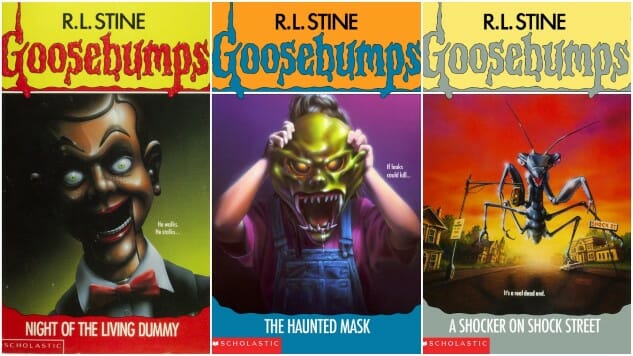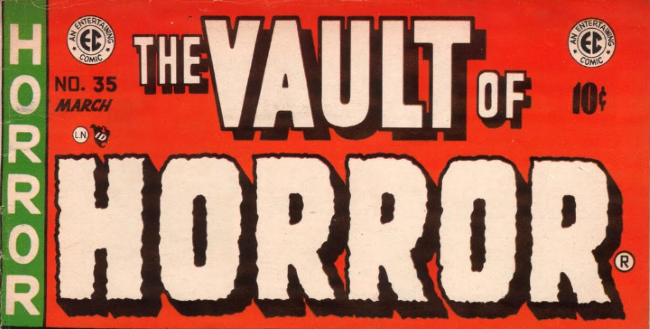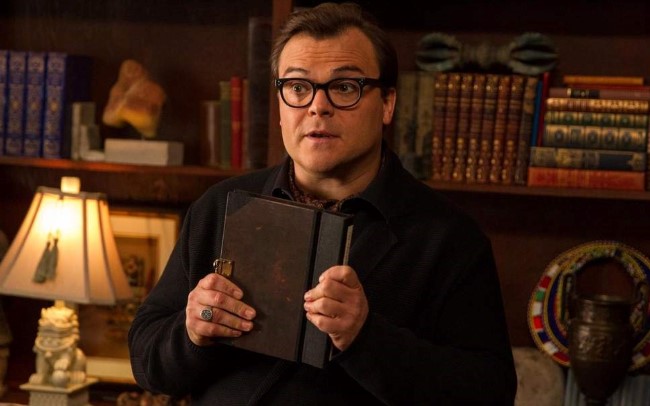
Robert Lawrence Stine, better known to a generation of frightened ’90s kids as simply “R. L.”, is a surprisingly genial presence on the other end of a phone call. From an office somewhere in New York City he dialed into my cell last week for a quick interview, ostensibly for the sake of promoting the home video release of 2018’s Goosebumps 2: Haunted Halloween (out Tuesday, January 15th), but our discussion of that particular film wasn’t exactly central to the conversation. Rather, I was struck by how gregarious Stine was in discussing the Goosebumps legacy and his roots in the horror genre, from one horror geek to another.
Certainly, you wouldn’t know you were talking to a guy who for three consecutive years in the 1990s held the title of America’s best-selling author. You wouldn’t know that Stine raked in approximately $41 million from his books in a single year during the height of Goosebumps mania, either. The 75-year-old has undeniably made one hell of a living with his novels for children and young adults, but at heart, he’s really still the funny Ohioan horror nerd who found a typewriter in the family attic at the age of nine and began to compose short stories. Ten minutes on the phone with R. L. Stine will make this abundantly clear.
Below is Paste’s conversation with Stine, in which the author dives into his horror roots, the oddities of seeing one’s work adapted in film and his memories of the failed ’90s attempt by Tim Burton to adapt Goosebumps.
Note: Goosebumps 2 is now available on Digital, Blu-ray, DVD, and 4K.
Paste Magazine: It’s a pleasure to speak with you, given how many Goosebumps books I devoured in grade school. I was always curious—were you exposed to horror fiction or film in the same way as a kid?
R. L. Stine: Well, when I was I was that age there were these great EC horror comics.
Paste: Oh yeah, like Vault of Horror and stuff.
Stine: Right, and Tales From the Crypt or The Witch’s Cauldron, oh I just loved those! They were so gruesome and bloody, and had all these crazy twist endings.
Paste: And they all ended up banned because of the Comics Code.
Stine: Right! But when I was a kid I would read them in the barber shop; they had a big stack of them. I wasn’t allowed to bring them home because my mother said they were trash. So, this is true—every Saturday morning I used to go get a haircut just so I could read the comic books. I had less hair when I was a kid than now! But that was my first exposure to horror.

Paste: That makes perfect sense, now that I hear it. So, in the heyday of Goosebumps in the ’90s, what kind of writing pace were you operating at? Just looking at the sheer number of different series you produced, it seems nearly impossible.
Stine: It was completely insane. Now, I don’t know how I did it. Obviously I was a lot younger, and I didn’t get out much, but I was writing a Fear Street and a Goosebumps book every month. I used to write a short novel every two weeks. I think the exhilaration of having such success after I’d already been writing for 20 years—to have this sudden, amazing success, it sort of fueled me and kept me going. I’m also very lucky that I never have trouble writing, ever. It’s the one thing I’m competent in. You can ask my wife. Somehow, I did this pace for two or three years at least.
Paste: If they combined you and George R. R. Martin into a single person, they’d have a normal writing pace.
Stine: Ha, he’d get his book finished. I actually met him last summer and I told him that I used to write a book or two a month, just to rub it in a bit. He’s a really nice guy, and really fun to talk to—unless you ask him when he’s going to finish his book. Then he’s not too happy.
Paste: Alright, so for the live-action Goosebumps films, each of them are sort of catch-alls that combine elements from practically every story you’ve written. Is that how you initially imagined Goosebumps being adapted for the big screen?
R. L. Stine: Well originally, we had a deal to do a Goosebumps movie like 20 years ago. Tim Burton was assigned to it; he was supposed to be the producer. And they just couldn’t figure out what to do, what book to do. They didn’t really make much progress until someone had the idea to make me a character and have my book characters all getting on the loose at once. And once they had that idea, they started to get scripts that they liked. So that’s how the film proceeded. But overall, my input barely extends past my five-second cameos.
Paste: You must have met Jack Black during those cameos, though. Did you have much discussion with him about the idea of playing a fictionalized version of you?
Stine: Oh, Jack and I spent time together in New York and on the set, and I did make some comments on the script to him. He asked me what was true about me in the script when we first met for lunch, and I said, “Jack, there’s nothing true about me in the script.” Not one thing, really. So he told me “OK, well I’m going to play a sinister version of you then.”
 Jack Black as “R. L. Stine.”
Jack Black as “R. L. Stine.”
Paste: You’re saying that you don’t actually have a ghost daughter played by Odeya Rush?
Stine: Well OK, that part is true. Oh, and I don’t use a typewriter anymore, either. Do you realize how many kids are buying typewriters because of those movies? It’s unbelievable. I get all these pictures of kids on Twitter, writing on their typewriters.
Paste: Before I let you go—if that Tim Burton adaptation had been adapting one specific book to a feature film, what do you think would have worked?
Stine: I still think The Haunted Mask would have worked. That was the first television show we ever did, and maybe the best. I still think it’s my best Halloween book. But I also think you could have done a Slappy story as a film as well.
In the end, it actually worked out nicely though, because a lot of my original readers like you are in their 30s now, and they have kids of their own. They came to the movies for nostalgia, and they brought their kids. It made for two totally different audiences.